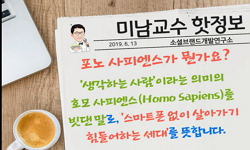카프탄(caftan)형 의복은 고대부터 동아시아의 여러 민족들이 착용해 온 대표적인 의복유형으로, 지금까지도 아시아 여러 민속의복에서 흔히 찾아볼 수 있는 유형이다. 이에 본 연구는 중국 ...
http://chineseinput.net/에서 pinyin(병음)방식으로 중국어를 변환할 수 있습니다.
변환된 중국어를 복사하여 사용하시면 됩니다.
- 中文 을 입력하시려면 zhongwen을 입력하시고 space를누르시면됩니다.
- 北京 을 입력하시려면 beijing을 입력하시고 space를 누르시면 됩니다.
https://www.riss.kr/link?id=A101725820
- 저자
- 발행기관
- 학술지명
- 권호사항
-
발행연도
2013
-
작성언어
Korean
- 주제어
-
등재정보
KCI등재
-
자료형태
학술저널
-
수록면
423-432(10쪽)
-
KCI 피인용횟수
1
- 제공처
-
0
상세조회 -
0
다운로드
부가정보
국문 초록 (Abstract)
카프탄(caftan)형 의복은 고대부터 동아시아의 여러 민족들이 착용해 온 대표적인 의복유형으로, 지금까지도 아시아 여러 민속의복에서 흔히 찾아볼 수 있는 유형이다. 이에 본 연구는 중국 고대(古代) 카프탄형 의복을 대표하는 포(袍)와 심의(深衣)의 개념과 형태를 고찰함으로써 동아시아의 대표적인 카프탄형 의복의 원류를 규명하고자 하였다. 연구의 시간적인 범위는 한대(漢代)까지이다. 연구의 범위를 한대까지로 한정한 것은 비교적 명확하였던 포와 심의의 의미와 외형이 한대 이후에는 변용되기 시작하였기 때문이다. 연구방법은 먼저, 중국 고대 주요 문헌들에서 포와심의에 대한 기록을 조사하여 그 개념과 형태특성을 분석하였다. 다음으로, 중국문화권 분묘에서 출토된 의복유물과 회화, 벽화, 인물상 등에 나타난 포와 심의의 형태특성을 조사하였다. 마지막으로, 문헌기록과 유물분석의 두 결과를 비교, 분석하여 결론을 도출하였다. 본 연구결과, 중국 고대의 심의와 포는 현재 통용되는 것과 분명한 차이가 있었다. 첫째, 고대의 포는 대개 겹으로 만들고 충전재를 넣어 방한과 방호를 목적으로 입었던 의복으로서, 실용적이며 검소한 개념의 옷이었다. 옷 길이는 무릎 내외였으며, 직령(直領), 직거(直祛) 형태였다. 그러나 후한시대 즈음에는 포가 겉옷으로 착용되었을 뿐만 아니라 황제의 예복, 공주나귀인, 비의 혼례복 등으로 사용되면서 그 위상이 격상되었다. 이와 동시에 옷 길이, 구성법, 재단법 등에 따른 종류와 디자인이 다양해지면서, 카프탄형 옷을 총칭하는 용어로 그 개념도 확장되었다. 둘째, 고대의 심의는 예를 갖추기 위하여 착용한 한족(漢族) 고유의 의례복이었다. 속옷이 완벽하지 않았던 한대 이전에는 피부가 노출되지 않도록 심의의 옷길이가 길었으며 몸을 깊이 둘러 감싸 여며 입는 요금(繞襟), 곡거(曲祛) 형태였으나 속옷이 발달하게 되면서 심의는 점차 요금, 직거(直祛) 형태로 변화하였다. 그러나 예복으로의 상징성은 계승되어, 심의는 후대 중국 예복의 기본을 형성하게 되었다.
다국어 초록 (Multilingual Abstract)
Lots of East Asian nations have worn caftan-shaped clothing in common historically. It is one of representative types in Asian traditional clothes. In particular, ancient Chinese clothing had influenced other surrounding nations` clothing and Korean c...
Lots of East Asian nations have worn caftan-shaped clothing in common historically. It is one of representative types in Asian traditional clothes. In particular, ancient Chinese clothing had influenced other surrounding nations` clothing and Korean clothes as well. So the object of this study is to search the origin of caftan-shaped clothing which represents East Asian clothing by examining the concept and shape of Po and Sim-ui, the representative types of ancient Chinese caftan-shaped clothes. The time range of this study is up to the Han-period. The reason for this time range is that relatively distinct concept and shape of Po and Sim-ui began to transform from this time on. The method of this study is, first, through the redords on Po and Sim-ui in ancient Chinese scriptures, history books, and dictionaries, their concept and shape characteristics are analyzed. Next, from the excavated clothes relics, paintings, wall paintings, and figure statues, the shape characteristics of Po and Sim-ui are examined. And this study results in the conclusion that the concept and shape of ancient Chinese Simp-ui and Po are certainly different from those of present time. Originally, ancient Po had been underclothing for protection against the cold and safety. But in the Han-period it was changed into outer garment like wedding dress. And it was varied in its shape and use as time went on. So its concept was extended to a general term for long dress. Ancient Sm-ui had long length and Po had the shape of wrapping body deeply. Ancient Sim-ui was the Chinese or the Han race`s ceremonial costume of their own which stressed their own etiquette. But as the underclothing was improving, the shape of Sim-ui was turned into the form of straight bottom edge line and wrapping body deeply. And the bases of Chinese ceremonial costume afterwards succeeded to its symbolic nature of ceremonial.
참고문헌 (Reference)
1 김소현, "호복 : 실크로드의 복식" 민속원 2003
2 이은진, "동아시아 복식의 역사" 교문사 2012
3 湖南省博物館, "長沙馬王堆一號漢墓" 文物出版社 67-, 1973
4 高格, "细说中国服饰" 光明日报出版社 2005
5 孫機, "深衣与楚服" 1 : 1982
6 華梅, "服飾與中國文化" 人民出版社 2001
7 黃能馥, "中國歷代服飾藝術" 中國旅游出版社 1999
8 高春明, "中國服飾名物考" 上海文化出版社 2001
9 袁仄, "中國服裝史" 中國紡織出版社 2005
10 沈從文, "中國古代服飾硏究" 南天書局 1988
1 김소현, "호복 : 실크로드의 복식" 민속원 2003
2 이은진, "동아시아 복식의 역사" 교문사 2012
3 湖南省博物館, "長沙馬王堆一號漢墓" 文物出版社 67-, 1973
4 高格, "细说中国服饰" 光明日报出版社 2005
5 孫機, "深衣与楚服" 1 : 1982
6 華梅, "服飾與中國文化" 人民出版社 2001
7 黃能馥, "中國歷代服飾藝術" 中國旅游出版社 1999
8 高春明, "中國服飾名物考" 上海文化出版社 2001
9 袁仄, "中國服裝史" 中國紡織出版社 2005
10 沈從文, "中國古代服飾硏究" 南天書局 1988
11 华梅, "中国服饰" 五洲传播出版社 2004
동일학술지(권/호) 다른 논문
-
- 한국디자인문화학회
- 이보희(Bo Hee Lee)
- 2013
- KCI등재
-
다문화시대의 디자인의 문화적 정체성과 보편성의 표현에 관한 연구
- 한국디자인문화학회
- 윤민희(Min Hie Yun)
- 2013
- KCI등재
-
지속적 반복 동작을 유도하는 노인용 운동기구 개발에 관한 연구
- 한국디자인문화학회
- 윤종영(Jong Young Yoon)
- 2013
- KCI등재
-
- 한국디자인문화학회
- 이수철(Soo Cheol Rhee)
- 2013
- KCI등재
분석정보
인용정보 인용지수 설명보기
학술지 이력
| 연월일 | 이력구분 | 이력상세 | 등재구분 |
|---|---|---|---|
| 2026 | 평가예정 | 재인증평가 신청대상 (재인증) | |
| 2020-01-01 | 평가 | 등재학술지 유지 (재인증) |  |
| 2017-01-01 | 평가 | 등재학술지 유지 (계속평가) |  |
| 2013-01-01 | 평가 | 등재학술지 유지 (등재유지) |  |
| 2010-01-01 | 평가 | 등재학술지 유지 (등재유지) |  |
| 2007-01-01 | 평가 | 등재학술지 선정 (등재후보2차) |  |
| 2006-01-01 | 평가 | 등재후보 1차 PASS (등재후보1차) |  |
| 2004-01-01 | 평가 | 등재후보학술지 선정 (신규평가) |  |
학술지 인용정보
| 기준연도 | WOS-KCI 통합IF(2년) | KCIF(2년) | KCIF(3년) |
|---|---|---|---|
| 2016 | 0.6 | 0.6 | 0.54 |
| KCIF(4년) | KCIF(5년) | 중심성지수(3년) | 즉시성지수 |
| 0.52 | 0.5 | 0.732 | 0.06 |




 DBpia
DBpia






